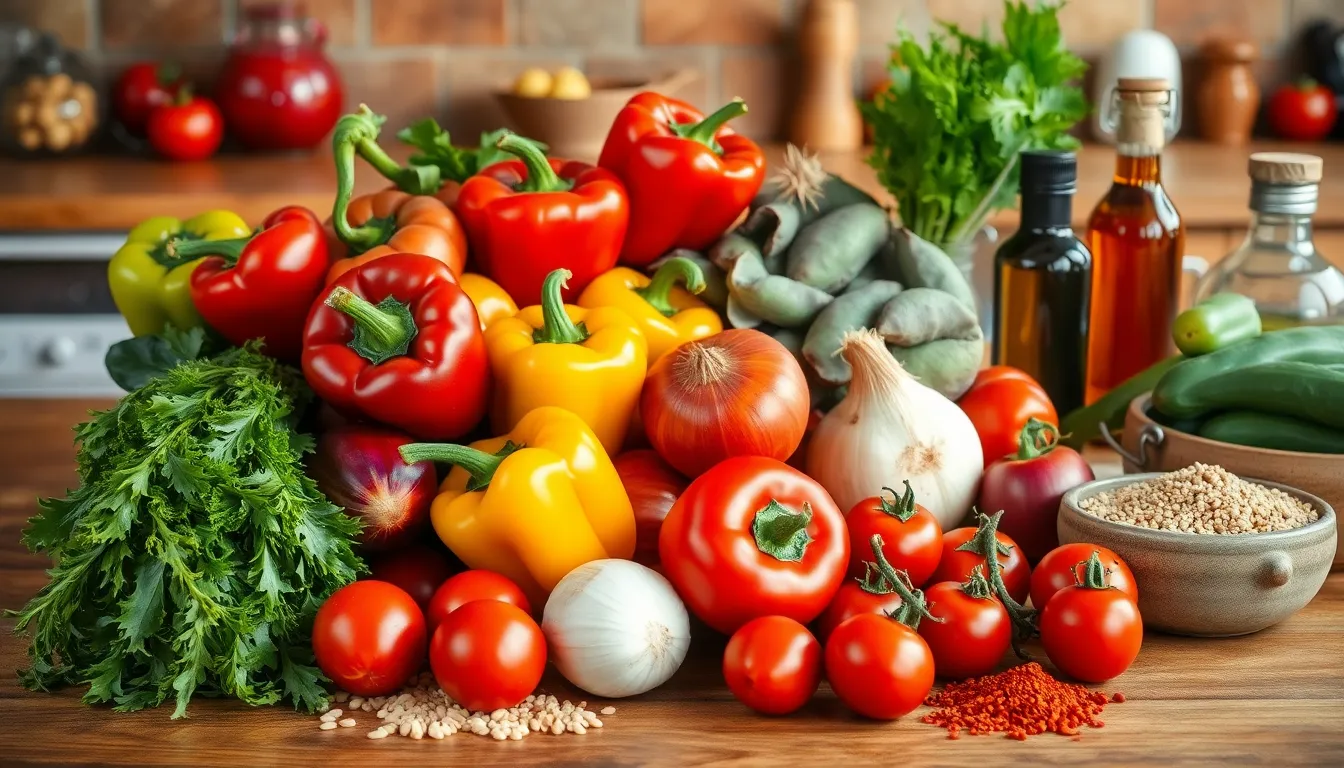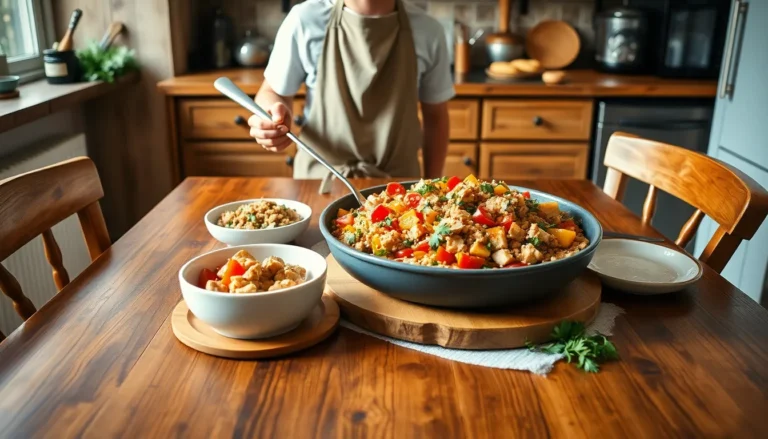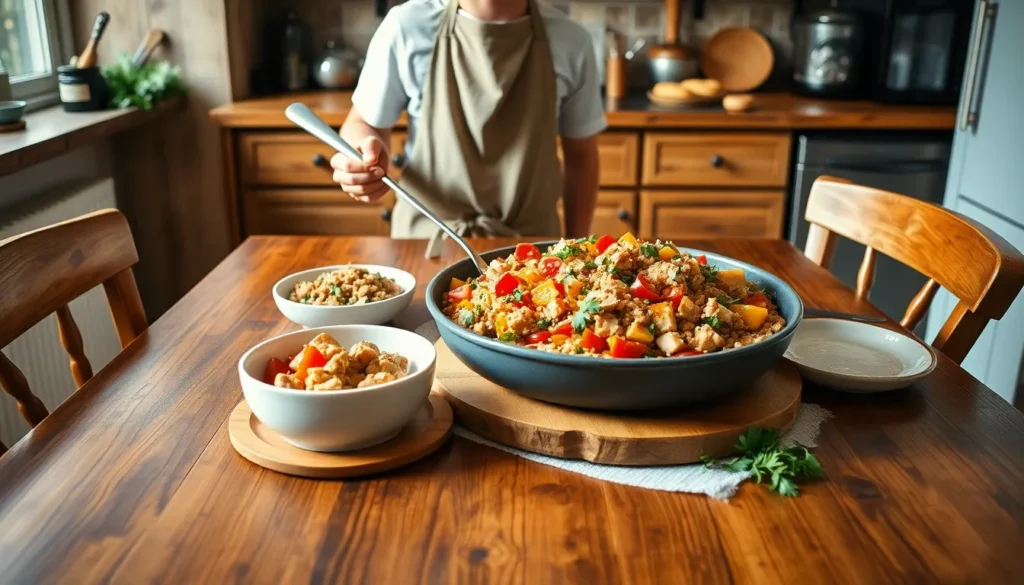Table of Contents
ToggleFostardu might sound like a fancy dish from a five-star restaurant, but it’s actually a delightful culinary adventure waiting to happen in your kitchen. Imagine impressing your friends with a dish that sounds exotic but is surprisingly easy to whip up. Cooking fostardu is like taking a trip around the world without leaving your home—your taste buds will thank you!
What Is Fostardu?
Fostardu represents a traditional dish, showcasing a unique blend of flavors and textures. Often associated with rich culinary heritage, its preparation reflects local ingredients and cooking techniques. This dish typically features a combination of fresh vegetables, proteins, and spices, contributing to its vibrant taste profile.
Originating from various regional influences, fostardu varies in presentation and ingredients based on cultural backgrounds. Common components include grains such as rice or quinoa, alongside meats like chicken or lamb. Additional layers of taste come from herbs and spices, enhancing the overall flavor.
Preparation methods for fostardu often involve sautéing, simmering, or baking, allowing for versatility in cooking styles. Chefs and home cooks can experiment with different vegetables and seasonings to create personalized variations. The cooking process emphasizes simplicity, making it accessible for home kitchens while still producing an impressive dish.
Fostardu holds a special place in many culinary traditions, often served at gatherings or festivities. Sharing this dish among family or friends creates memorable dining experiences. When prepared correctly, fostardu showcases not just the ingredients, but also the love and artistry involved in cooking.
Balancing flavor and texture, fostardu satisfies the palate while highlighting the beauty of cooking. Its delightful complexity invites everyone to explore a world of tastes, capturing the essence of global cuisine right at home.
Ingredients Needed

Cooking fostardu requires a blend of essential and optional ingredients that elevate the dish’s flavor and texture. Gathering the right components will ensure a delightful culinary experience.
Main Ingredients
Fresh vegetables form the foundation of fostardu, with choices like bell peppers, onions, and tomatoes often used. Proteins such as chicken, lamb, and chickpeas add heartiness to the dish. Grains like rice or quinoa serve as the base, absorbing flavors during cooking. Olive oil provides richness, while spices including cumin, coriander, and paprika infuse vibrant aromas. Finally, broth or stock enhances moisture and depth, creating a well-rounded dish.
Optional Ingredients
Adding herbs can boost freshness, with parsley or cilantro often sprinkled on top. Nuts like almonds or pine nuts introduce pleasant crunchiness, while dried fruits such as raisins or apricots offer sweetness. Various cheeses may complement the dish, including feta or goat cheese for creaminess. For those who enjoy heat, fresh chili peppers or red pepper flakes can be included. Alternatively, lemon or lime juice provides acidity, balancing out flavors beautifully.
Cooking Tools Required
To prepare fostardu, a few essential tools streamline the cooking process. A large skillet or frying pan proves invaluable for sautéing ingredients, allowing for even heat distribution. A sturdy cutting board helps in chopping fresh vegetables and proteins, ensuring safety and efficiency.
Knives of various sizes, including a chef’s knife, make it easier to create uniform pieces. Measuring cups and spoons assist with precise ingredient use, which maintains flavor balance.
A ladle serves well for portioning sauces or broths into the dish, while a wooden spoon aids in stirring without scratching cookware surfaces. For simmering ingredients, a pot or saucepan comes in handy. Using an oven-safe dish or casserole makes baking options feasible, adding versatility to the cooking methods.
Finally, having a vegetable peeler and a grater can enhance preparations by removing skins and adding textures. By gathering these tools, cooks can efficiently create their fostardu masterpiece, transforming local ingredients into a globally inspired dish.
Step-by-Step Guide on How to Cook Fostardu
Follow this guide to prepare and cook fostardu with ease. Each step ensures a flavorful outcome.
Preparing the Ingredients
Begin by washing fresh vegetables like bell peppers, onions, and tomatoes thoroughly. Chop them into bite-sized pieces for even cooking. Choose proteins such as chicken, lamb, or chickpeas, and cut them into small portions for quicker incorporation. Measure grains like rice or quinoa, as they absorb flavors during cooking. Utilizing spices, such as cumin, coriander, and paprika, adds aromatic depth. Having fresh herbs like parsley or cilantro on hand brightens the dish. Consider adding nuts, dried fruits, or cheese for texture. Gather all ingredients beforehand to streamline the cooking process.
Cooking Process
Heat olive oil in a large skillet over medium heat, allowing it to shimmer. Sauté chopped onions until translucent, followed by bell peppers and tomatoes. Stir continuously to prevent sticking. Add the chosen protein next, cooking until browned and thoroughly done. Incorporate the measured grains and broth, stirring to combine. Season the mixture with spices and check the flavor balance. Cover the skillet, letting the dish simmer until the grains achieve tenderness. For an oven-baked option, transfer the mixture to an oven-safe dish, topping it with cheese before baking until golden. This method adds a delicious, melted layer to the dish, enhancing the overall flavor profile.
Serving Suggestions
Fostardu pairs well with a variety of side dishes. Consider serving it alongside a fresh green salad, which adds a crisp contrast to the dish’s rich flavors. Roasted vegetables enhance the meal’s warmth and bring out the natural sweetness within the ingredients. Grains like couscous or a quinoa salad also work well, providing additional textures and flavors.
For those wanting a bit of spice, adding a hot sauce or a yogurt-based dip elevates the overall enjoyment. Fresh herbs like mint or basil can brighten the dish, adding an aromatic layer that complements the existing flavors.
When serving fosterdu at gatherings, presentation matters. Plating the dish in a large serving bowl allows everyone to enjoy the colors and textures visually. Garnishing with sliced lemon wedges or a sprinkle of chopped parsley provides a cheerful touch.
Accompanying beverages can enhance the dining experience. Pairing fostardu with white wine, such as Sauvignon Blanc, creates a delightful contrast. Alternatively, a light lager can balance the dish’s spices and richness.
Seasonal variations also enrich serving options. During summer, consider adding grilled corn or fresh tomatoes for a vibrant twist. In cooler months, serving with roasted root vegetables adds a cozy feel.
Desserts following the meal can round out the dining experience. Offering light fruit salads or yogurt parfaits keeps the meal refreshing and satisfying. By combining these serving suggestions, fostardu transforms into a well-rounded culinary experience.
Cooking fostardu offers a unique opportunity to explore diverse flavors while creating a dish that impresses guests. With its versatile ingredients and cooking methods it caters to various tastes and preferences. Whether enjoyed at a casual gathering or a special occasion this dish brings people together around the table.
By following the outlined steps and tips anyone can master the art of making fostardu, transforming simple ingredients into a culinary masterpiece. The joy of sharing this dish with loved ones enhances the experience making every bite a celebration of flavor and tradition. Embrace the journey of cooking fostardu and let it inspire creativity in the kitchen.






